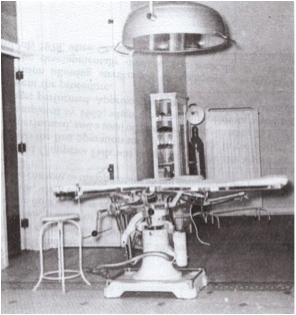Eugenics

Eugenics is defined as a movement that involves "applying principles of genetics and heredity for the purpose of improving the human race" (Bouche & Rivard, 2014, paragraph two). Though there were ideas that aligned with eugenics that date all the way back to 1800 BCE, the coining of the term "eugenics", and the fundamentals for applying eugenics ideas, arose in 1883, and was created by Francis Galton (Liscum & Garcia, 2021). Motivated by Darwin's theory of evolution, and the work of Mendel in association with inheritance, Galton came to the conclusion that a improved society could be built through reproduction from the 'fittest' members of the population, while also restricting reproduction in less 'fit' members of the population (Liscum & Garcia, 2021).
The conception of this idea coincided with a significant time in history, when the middle and upper classes were having less children, and the lower class, which was seen as unfit, was reproducing at greater rates. Along with this, social concerns about political corruption, industrialization, and immigration were also on the rise (Liscum & Garcia, 2021). Eugenics was offered up as a solution to both societal and human problems. Because of the changes in the social climate, and the possibilities of what eugenics could offer to solve those problems, the United States became the leader in eugenics science in the early 1900s (Liscum & Garcia, 2021).
The application of eugenics in the United States was imposed through laws, which selected those considered 'fit' and 'unfit' based largely on prejudice, "isms", and social and economic ideas, and had those considered unfit to be involuntarily sterilized (Liscum & Garcia, 2021). Those who were considered unfit included criminals, alcoholics, sex workers, and those struggling with physical and/or mental illness (Liscum & Garcia, 2021). The first state to enact these laws was Indiana in 1907, and in the years following 14 other states also enacted sterilization laws. These laws were quickly challenged in many states, with eight of these states having to resend these laws due to going against other state laws, or the United States Constitution (Liscum & Garcia, 2021).
The fight for national eugenics laws continued for many years, with many proposed laws being taken all the way to the Supreme Court. The movement for eugenics in the United States, however, began to die out with World War II (Liscum & Garcia, 2021). After Hitler and the Nazi party rose to power in 1933, the Nazi party began taking the eugenics 'science' that had been so greatly supported by many in the United States, and used it as a weapon to eradicate a whole ethnic group of people (Liscum & Garcia, 2021). After the United States saw how their classic eugenics idea became a weapon against an entire ethnic group of people, eugenics as a practice began to be questioned. The United States stepped away from eugenics sterilization laws after World War II and the Holocaust, but it is important to note that eugenics did not totally die out (Liscum & Garcia, 2021). While it is no longer used as a founding idea of picking those who are 'fit' and 'unfit' within the population, eugenics is now a topic in the genetics field as a way to advance human genetics in situations that are considered 'medically-relevant' (Liscum & Garcia, 2021).
Collections Detailing Eugenics
Galton Papers (GALTON), University College London Special Collections, University College London, London, United Kingdom.
The Galton Papers consist of materials associated with the Galton family, Galton's research, and his correspondence. Because Francis Galton was the originator of the eugenics idea, this collection includes much of his work looking at the inherited traits of humans. This includes materials such as an unfinished eugenics novel, and research into twins, longevity, and the law of hereditary.
William Shockley and Eugenics Collection (SC0595), Department of Special Collections and University Archives, Stanford, California.
The William Shockley and Eugenics Collection details Shockley's work with eugenics. Shockley embraced and advocated for eugenics, and participated in research on heredity, IQ, and race. This collection contains materials such as correspondence, publications, and ephemera related to Shockley's work.
Association for Voluntary Sterilization Records (SW0015), Department of Archives andSpecial Collections, University on Minnesota, Minneapolis, Minnesota.
The Association for Voluntary Sterilization (AVS) Records includes correspondence, legal documents, conference proceedings, and newspaper clippings of the group. The AVS was committed to providing eugenics information to doctors, organizations, and the public, and provided financial assistance to those interested in being sterilized. These records also show the progression of the group from one that advocated for involuntary sterilization of those seen as 'unfit' to one that supported voluntary sterilization as birth control.